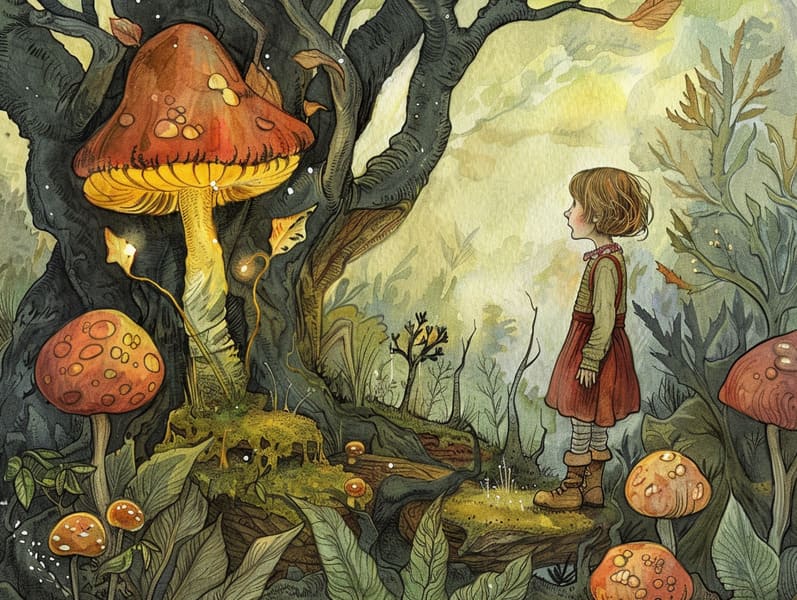
Best fairy tales have long histories. These narratives have been narrated from one generation to the next centuries before they were ever transcribed. They sprang from a variety of cultures, including European traditions. They were initially shared among elders, often carrying themes and messages aligned with the societal norms and beliefs of the time.
The Brothers Grimm, the two Grimm brothers, were among the first to collect and release many of these beloved narratives. Their compilation, "Grimm's Fairy Stories," included classics like "Ashenputtel," "The Bread Crumb Trail," and "Schneewittchen," which have since become classics in the world of classic fairy tales. Similarly, the Danish author's fantastical tales, such as "The Mermaid's Tale," and "The Duckling's Story," have won hearts worldwide, securing their place in the pantheon of treasured fairy tales.
Despite being ancient, these tales remain as important as ever, especially as children's bedtime stories. These fantastical tales are now available in diverse formats, including colorful picture books, magical animations, and online fairy tales.
Their lasting presence can be connected to several delightful features:
Key Lessons: Timeless fairy tales often impart important moral lessons. Stories like "The Shepherd Boy and the Wolf" teach the merit of sincerity, while "The Race of the Tortoise and the Hare" highlight the values of tenacity and unpretentiousness. These narratives offer young readers clear distinctions between right and wrong, building their moral compass in a subtle yet deep way.
Empathy and Understanding: Fairy tales frequently present heroines facing obstacles and hardships, prompting young readers to identify with their struggles and back their triumphs. For instance, "The Story of Beauty and the Beast" illustrates the significance of seeing beyond the surface to realize the real character of a soul, nurturing sympathy and discernment.
Cultural Knowledge: Many ancient fairy tales are steeped in the cultural contexts from which they bloomed. Learning from these tales can provide fascinating glimpses into different cultures, strengthening a sense of global awareness and discernment.
Imagination and Innovation: The whimsical elements in classic fairy tales—enchanted forests—fuel children’s imaginations. These fairy tales lead readers to fantastical realms, unleashing fantastical thinking and a sense of awe that remains a lifetime.
Timeless fairy tales are not only captivating but also didactic. They work as entrancing tools in strengthening various cognitive and affective skills in kids. When fairy tales are recited, they boost language skills by offering new language items and complicated check it out sentence structures. This practice also develops auditory perception and attentiveness, as little ones hang on every word, ready to see what happens next.
Furthermore, discussing the themes and characters of fairy tales can strengthen intellectual skills and reasoning skills. Young readers are guided to detect patterns, anticipate outcomes, and get cause and effect. These contemplations also encourage the young express their thoughts and feelings, nurturing their emotional intelligence.
In today’s digital era, the abundance of online storybooks has made these fairy tales more obtainable than ever. Online resources and mobile apps offer wide arrays of old fairy tales that can be read or listened to anytime, anywhere. Fairy tales read aloud are particularly sought after, sharing an entertaining method for the young to engage with these mesmerizing stories. Read-aloud stories and narrated videos carry characters and settings to life, often enhanced by spellbinding background sounds and instrumentals that raise the narrative adventure.
The unending appeal of old fairy tales lies in their ability to shift to contemporary times while staying true to their main lessons. Contemporary revisions of these fairy tales often spotlight more diverse figures and modern settings, making them meaningful to today’s audience. However, the key lessons of gallantry, empathy, and fairness remain unchanged, continuing to influence children of all ages.
Timeless fairy tales also offer a sense of coziness and knowability. They allow a well-arranged narrative with a definite beginning, middle, and end, often ending with the resolution of conflicts and the triumph of good over bad. This regularity can be easing for children, spreading a sense of steadfastness in an shifting world.
Classic fairy tales continue to allure and enlighten new generations, maintaining their magic and meaningfulness in modern society. As bedtime stories for kids, they share a perfect blend of delight and instruction, furthering moral values, empathy, and creativity. The prevalence of online fairy tales and the in demand status of fairy tales voiced certify that these old tales remain reachable to new generations.
By safeguarding and communicating these narratives, we continue to admire the rich tapestry of tales and cultural heritage. Whether you are delving into a colorful picture book, delving into a cyber library, or listening to an read-aloud book, the fascination of classic fairy tales is always within reach. These narratives teach us of the unfading impact of fairy tales and its ability to join us across epochs and places.
Be it you are seeing a gorgeously illustrated book, viewing a online collection, or listening to an voice book, the wonder of traditional fairy tales is always within reach.
These narratives show us of the perpetual nature of stories and its ability to bind us across centuries and lands, weaving a spell that fascinates and enlightens alike.